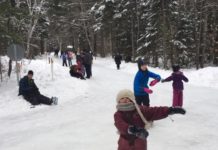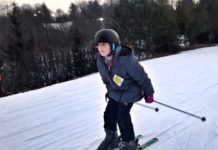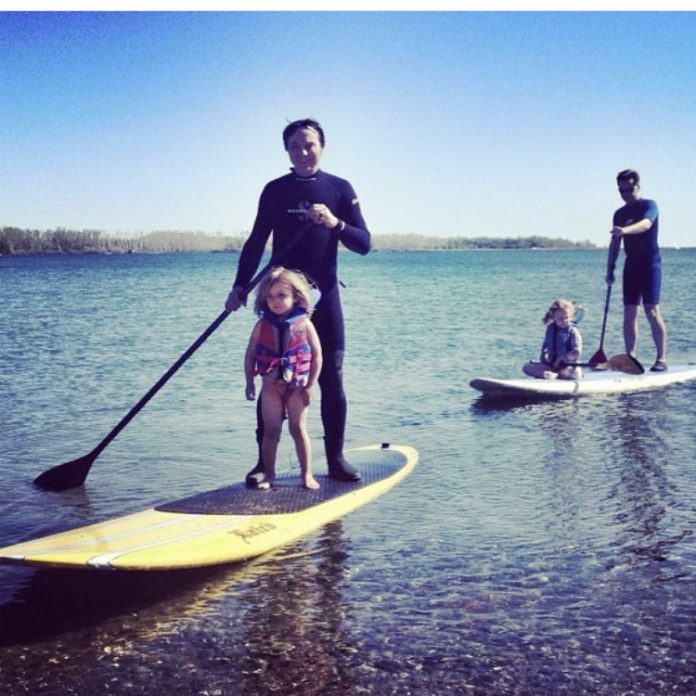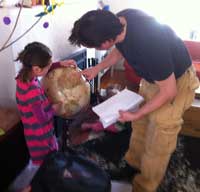By Katie Elizabeth
When it comes to kids, “just add water” is a recipe for fun. Kids have a natural love of water, whether they’re playing at the local water park or snorkeling at a tropical resort. Kayaking and surfing provide entertainment for the whole family. But with the discovery of stand-up paddling (SUP for short), you can combine elements of both water activities.
What is Stand-up Paddling?
Stand-up paddlers balance on a surfboard and move with a long paddle. You can stand-up paddle on any reasonably calm body of water. While many people enjoy ocean SUP, people also stand-up paddle on rivers and lakes.
How Old Do Kids Have to Be?
Kids as young as five can SUP with supervision in shallow water. Older kids who can swim can paddle in deeper, choppier water with adult supervision. No matter how skilled a swimmer a child is, he or she needs to wear a life jacket when paddling.
Kids should also be taught never to swim away from their boards. A board can drift away while swimming for a lost paddle, and it’s much better to have a board with no paddle than the other way around.
Supplies and Boards
All you need for SUP is a board, a paddle and a life vest. Each person should have their own gear. Many kids learn to stand up paddle on their parent’s longboards. For beginners, longer and larger boards are easier to balance on than shorter boards.
Secondhand surfboards are fine for teaching kids the basics of SUP, but as they grow and improve you might want to invest in boards specifically designed for stand-up paddling. A SUP board offers gentler foot surfaces and is designed slightly differently from traditional longboards.
In addition, you’ll need ankle straps for the boards, hats for sunny days, and plenty of sunscreen. Be sure not to neglect the sun protection; if you don’t, you’ll all be sunburned by the end of the paddle.
Getting Started
While you may have visions of the family paddling along a pristine Hawaiian coastline, the ocean is often too rough for young paddlers. Additionally, if you live inland you’re restricting your SUP opportunities if you only think in terms of saltwater.
Small-to-mid sized lakes and ponds offer ideal environments for beginning paddlers (this means you as well as the kids). Choose a quiet, calm day with little wind. The calmer the water, the better off you’ll be.
The first step you’ll master is standing up on the board. The second will be falling off, so make sure you’re in deep enough water you don’t hit the bottom. While SUP is, generally, easier to master than surfing, it takes time to find your balance on the board.
Your kids, with their lower centers of gravity, are likely to master balancing faster than you, but can’t be allowed to paddle off until you can accompany them. You might want to consider taking a short SUP course first, so you can get a head start on balancing skills.








